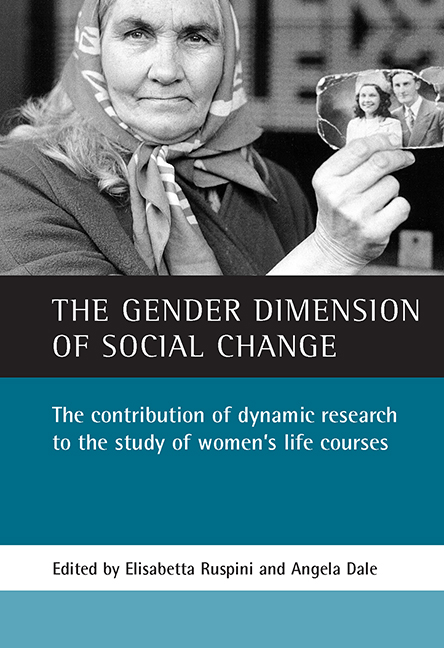 The Gender Dimension of Social Change
The Gender Dimension of Social Change six - Women’s incomes over a synthetic lifetime
Published online by Cambridge University Press: 20 January 2022
Summary
Introduction
Longitudinal data illustrate the unfolding of the life course, but they seldom give a complete account of real lifetimes. Where they do it is mainly of historic interest. Prospectively, there is more interest prospectively in the long-term, that is, lifetime consequences of developments in early and mid-life. This chapter presents some results of a simulation model of earnings, income and pensions over the lifetime of illustrative British individuals, built upon both longitudinal and cross-sectional evidence. The model started as an exploration of the long-term impact of childbearing on women’s lifetime earnings, but it has since been elaborated to illustrate, among other things, gender differences over a hypothetical lifetime, in pay, earnings and net income; the role of the family and the state in redistributing income over time, and the different lifetime experiences of people with different initial levels of earning power. As the latter are very striking, and affect differentials by motherhood and by gender dramatically, they are paid special attention in this overview of findings.
Wherever income varies over the life course, a one-period snapshot of a person’s income may not be very informative. For example, it would not necessarily be correct to infer that someone observed at one point with no earnings would necessarily never have earned in the past, or would remain in that state in the future. Likewise people who are employed at one point may not always be employed at another. The longitudinal perspective, unlike crosssections, can show the proportions of a history devoted to various states, and the sequences among them. It can also relate the history of labour force activity to events in other domains, such as partnership and childrearing.
In the case of women, family-related fluctuations in earnings over the lifecycle increase the need to take a long-term perspective. This can show the influences of childbearing on earnings and income, and draw out the labour market and income consequences of different marital histories for women’s finances. By looking over the whole life course it is possible to show how far taxes, benefits and pensions smooth women’s incomes over lifetimes. Especially where there are gender differences in earnings, it is relevant to investigate how the family itself may redistribute lifetime income towards women, and to put gender differences in earnings in this long-term perspective
- Type
- Chapter
- Information
- The Gender Dimension of Social ChangeThe Contribution of Dynamic Research to the Study of Women's Life Courses, pp. 111 - 132Publisher: Bristol University PressPrint publication year: 2002


